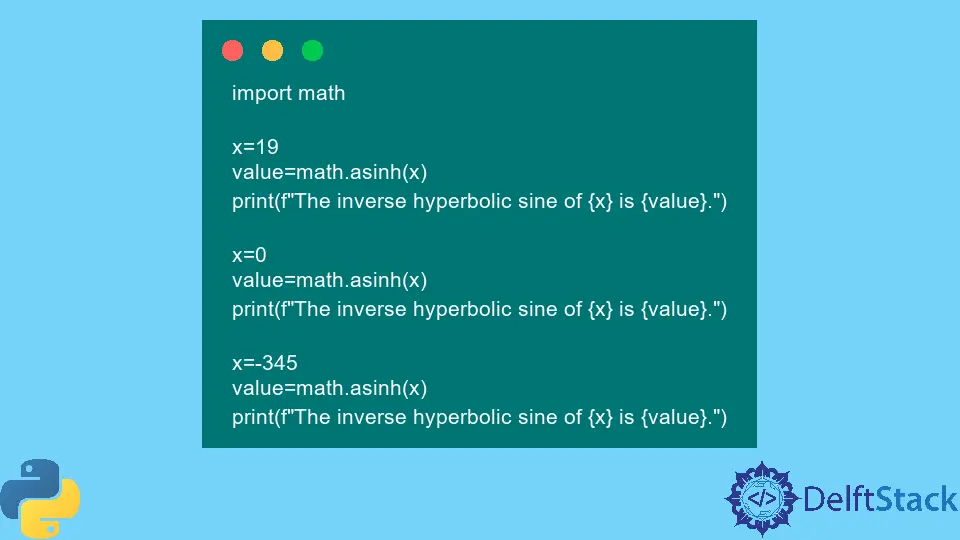Python math.asinh() Method
Musfirah Waseem
Jan 30, 2023
Python
Python Math
-
Syntax of Python
math.asinh()Method -
Example Codes: Use the
math.asinh()Method in Python -
Example Codes: Using the Equivalent of the
math.asinh()Method

Python math.asinh() method is an efficient way of calculating the inverse hyperbolic sine of a number, x, in radians.
Syntax of Python math.asinh() Method
math.asinh(x)
Parameters
x |
Any positive or negative value to be operated on. |
Return
The return type of this method is a float value representing the inverse hyperbolic sine of x in radians.
Example Codes: Use the math.asinh() Method in Python
import math
x = 19
value = math.asinh(x)
print(f"The inverse hyperbolic sine of {x} is {value}.")
x = 0
value = math.asinh(x)
print(f"The inverse hyperbolic sine of {x} is {value}.")
x = -345
value = math.asinh(x)
print(f"The inverse hyperbolic sine of {x} is {value}.")
Output:
The inverse hyperbolic sine of 19 is 3.6382779622295387.
The inverse hyperbolic sine of 0 is 0.0.
The inverse hyperbolic sine of -345 is -6.536693697983764.
Note that the arguments can be in integers or floats. The values may be either positive or negative.
Example Codes: Using the Equivalent of the math.asinh() Method
import math
x = 19
value = math.asinh(x)
print(f"The inverse hyperbolic sine of {x} is {value}.")
equation = math.log(x + math.sqrt((x * x) + 1))
print(f"Using the equation, the inverse hyperbolic sine of {x} is {equation}.")
Output:
The inverse hyperbolic sine of 19 is 3.6382779622295387.
Using the equation, the inverse hyperbolic sine of 19 is 3.6382779622295387.
Note that a TypeError exception may occur if the argument value is not a number.
Enjoying our tutorials? Subscribe to DelftStack on YouTube to support us in creating more high-quality video guides. Subscribe
Author: Musfirah Waseem
Musfirah is a student of computer science from the best university in Pakistan. She has a knack for programming and everything related. She is a tech geek who loves to help people as much as possible.
LinkedIn